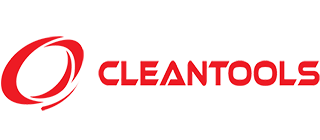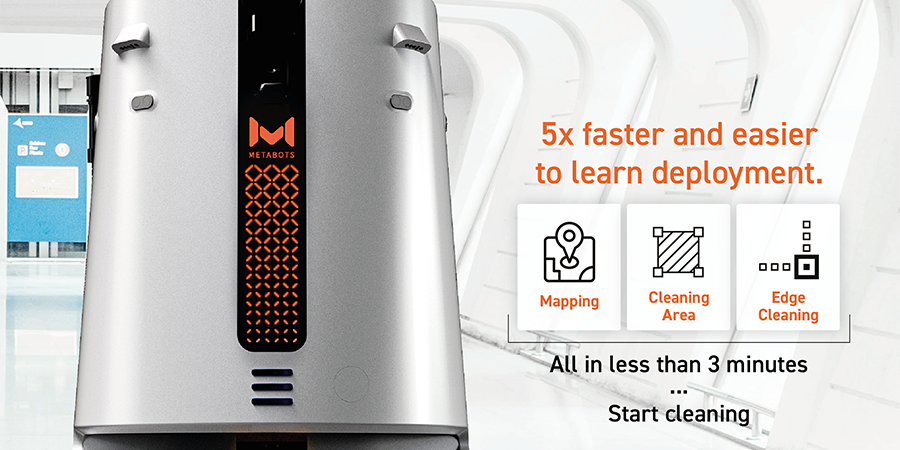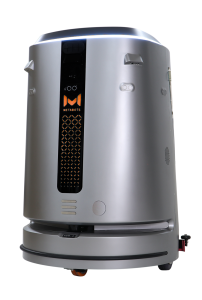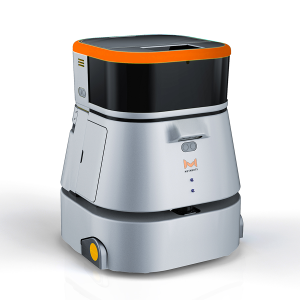In today’s fast-paced world, automation has revolutionized several industries, and cleaning is no exception. Whether you manage a commercial space, run a business, or simply want to maintain your home, automated cleaning tools are increasingly available to streamline your processes. However, not every cleaning task is best suited for automation. Let’s take a look at ten cleaning processes you can consider automating — or, depending on your needs, continue handling manually.
This article explores ten common cleaning processes, the latest technologies available, and the advantages and disadvantages of automating these tasks. We also discuss the need for training, downtime, costs, and the potential future savings in time.
Additionally, parents, especially mummies and daddies, will find these solutions incredibly beneficial as they navigate the challenges of balancing household chores with parenting duties.
1. Floor Scrubbing and Mopping
One of the most common cleaning tasks that benefits from automation is floor scrubbing. Machines like the META-SCRUB 60, META-SCRUB 45 and META-MOP 40 from METABOTS, a subsidiary brand of CLEANTOOLS, are perfect for industrial and commercial environments where consistent and thorough cleaning is critical. Automated scrubbers save time, reduce labor, and ensure that floors are cleaned uniformly every time.
Like floor scrubbing, mopping is well-suited to automation. METABOTS’ TESTA MOP 2 and MET-MOP 40 are specifically designed to handle large areas, particularly in industrial or commercial settings. With smart features like obstacle detection and adaptive cleaning patterns, these machines significantly reduce manual labor.
Pros:
- Efficiency: Automatic scrubber-dryers can clean large floor areas quickly and thoroughly, reducing the time spent on manual scrubbing. This is particularly useful for parents who are juggling household chores and taking care of young children.
- Consistency: These machines ensure a uniform cleaning process, providing consistent results every time.
- Less Labor-Intensive: Reduces physical strain on cleaners, making it ideal for large office spaces or commercial areas.
Cons:
- High Initial Cost: The purchase and maintenance of automatic scrubber-dryers can be expensive.
- Training Required: Cleaners need to be trained to operate these machines properly, adding to initial costs and time.
- Downtime for Repairs: Machines can break down, leading to potential downtime and the need for backup cleaning methods.
Verdict: Automating floor scrubbing is beneficial for large spaces where time and consistency are crucial. Office locales benefit the most from this! However, for smaller areas, the costs may outweigh the benefits. Parents can also consider hiring helping hands like nannies, who can assist with both child care and household chores, freeing up time for important work and quality time with each other.
2. Carpet Cleaning with Robot Cleaners
Although there are automated carpet cleaning machines on the market, this process hasn’t fully matured for larger, high-traffic areas. For deep cleaning carpets, manual or semi-automated methods still provide superior results. METABOTS, as part of CLEANTOOLS, currently specializes in hard-surface cleaning, though carpet-cleaning robots may become part of their range in the future.
Pros:
- Convenience: Robot cleaners can operate autonomously, cleaning carpets without the need for manual supervision. Parents, especially, will find this feature helpful as it allows them to focus on their children while the cleaning happens in the background.
- Programmable Schedules: These devices can be set to clean at specific times, even during off-hours, ensuring carpets are always clean.
- Compact Design: Ideal for small to medium-sized offices and homes, where they can easily navigate under furniture.
Cons:
- Limited Deep Cleaning: Robot cleaners may not be as effective for deep cleaning tasks or removing stubborn stains.
- Obstacle Navigation: They can sometimes struggle with obstacles like cords, furniture, or uneven surfaces.
- Maintenance: Regular cleaning of the robot itself is necessary to maintain efficiency.
Verdict: Robot cleaners are great for regular maintenance and surface-level cleaning. For deep cleaning, professional carpet cleaners are still necessary. For parents, these devices can be a lifesaver by handling routine cleaning, allowing them to dedicate more time to their children and family activities.
3. Window Cleaning with High-Pressure Jet Washers
Pros:
- Thorough Cleaning: High-pressure jet washers can effectively remove dirt, grime, and stains from windows.
- Reach: They allow for cleaning hard-to-reach windows and high-rise buildings without the need for ladders or scaffolding.
- Time-Saving: Speeds up the cleaning process significantly compared to manual scrubbing.
Cons:
- Potential Damage: High pressure can cause damage to windows, seals, or surrounding areas if not used correctly.
- Water Use: These washers consume a lot of water, which may not be ideal in areas with water restrictions.
- Training and Safety: Operators need proper training to handle these tools safely, especially at heights.
Verdict: High-pressure jet washers are ideal for professional use in large buildings. For home use, simpler methods might be more practical. Parents may find manual cleaning less costly and easier to manage, but if time is of the essence, notably for office spaces, automated solutions could be worth considering alongside help from a professional cleaning service.
4. Sweeping with Automatic Sweepers
Pros:
- Coverage: Automatic sweepers can cover large areas, making them ideal for commercial spaces, warehouses, and parking lots.
- Efficiency: Faster than manual sweeping, especially in areas with heavy foot traffic or debris.
- Multi-Surface Use: Suitable for various types of flooring, including concrete, tile, and hardwood.
Cons:
- Noise: These machines can be noisy, which might not be suitable for office environments during working hours.
- Size and Maneuverability: Larger models may have difficulty maneuvering in tight spaces.
- Maintenance: Regular maintenance is required to keep the machines running smoothly.
Verdict: Automating sweeping is beneficial in large commercial spaces. In smaller offices, manual sweeping might still be more effective and economical. For parents with young children, noise and space considerations may make manual methods or smaller, quieter robotic alternatives more suitable.
5. Toilet Cleaning with Automated Toilet Cleaners
Restroom cleaning can be partially automated, especially for floor scrubbing and disinfection, but many aspects still require manual intervention, such as cleaning mirrors, sinks, and toilets. While robots can assist with some tasks, human involvement is still essential for ensuring deep cleanliness in confined spaces.
Pros:
- Hygiene: Automated toilet cleaners reduce direct contact with dirty surfaces, enhancing hygiene.
- Consistency: These devices provide a consistent cleaning process, ensuring toilets are always clean.
- Chemical Control: Automated dispensers can regulate the amount of cleaning solution used, preventing wastage.
Cons:
- Initial Setup: Installing automated cleaners can be costly and requires professional installation.
- Limited to Basic Cleaning: These systems typically handle surface cleaning only and may not address deeper grime or scale buildup.
- Dependence on Technology: If the system fails, manual cleaning must be resumed.
Verdict: Ideal for high-traffic restrooms in commercial settings, but might be overkill for home use unless heavily used. For our corporate clients, keeping bathrooms clean and germ-free is crucial, and having automated solutions can help maintain hygiene while saving time.
6. Dishwashing with Dishwashers
Pros:
- Time-Saving: Dishwashers free up time for other tasks by handling large loads of dishes at once. This is especially helpful for parents who need to focus on child-rearing rather than cleaning up after meals.
- Sanitation: Modern dishwashers have high-temperature settings that kill bacteria and sanitize dishes effectively.
- Water Efficiency: Often use less water compared to hand washing, especially for full loads.
Cons:
- Energy Use: Dishwashers consume electricity, which might increase utility bills.
- Pre-Rinsing Required: Most dishwashers require a pre-rinse to remove heavy food residues, adding to the time and effort.
- Not All Items Safe: Some delicate items or non-dishwasher-safe materials still need to be washed by hand.
Verdict: Dishwashers are highly effective for most households and offices. They save time and water but might not eliminate all hand washing. Parents will appreciate the time saved, allowing for more family bonding or personal relaxation.
7. Laundry with Automatic Washing Machines and Dryers
Pros:
- Convenience: Automates the process of washing and drying clothes, saving significant time and effort. Parents, especially those with infants, will find this invaluable for managing the constant cycle of washing.
- Versatility: Modern machines have multiple settings for different fabric types and soil levels.
- Energy Efficient: Newer models are designed to be energy and water-efficient, reducing operational costs.
Cons:
- Initial Cost: High upfront cost for purchasing and installing these machines.
- Space Requirement: Requires adequate space and plumbing, which may not be available in all homes or offices.
- Potential Damage: Incorrect settings or overloaded machines can damage clothes.
Verdict: Automated laundry is a staple for most homes and offices. The convenience and efficiency outweigh the cons, especially for larger households or businesses. Parents will particularly benefit from these machines, freeing up time that would otherwise be spent on manual laundry.
8. Vacuuming with Robot Vacuum Cleaners
Automated vacuums, such as robotic vacuum cleaners, have made significant strides in both household and commercial use. For larger industrial areas, wet and dry vacuums offered by CLEANTOOLS provide robust solutions. While smaller robot vacuums are ideal for homes or small offices
Pros:
- Autonomous Operation: Robot vacuums can clean autonomously, even when no one is home, keeping floors clean at all times. This is perfect for parents who want to maintain a tidy home without constant supervision.
- Compact and Quiet: Designed to navigate under furniture and around obstacles quietly, making them suitable for home and office environments.
- Smart Technology: Many models come with smart technology, allowing for remote control via apps and integration with home automation systems.
Cons:
- Battery Life: Limited battery life may require frequent recharging or replacement.
- Navigation Issues: Can get stuck on cords, rugs, or under furniture, requiring manual intervention.
- Limited to Floors: Cannot clean stairs or vertical surfaces, necessitating additional tools for comprehensive cleaning.
Verdict: Robot vacuums are great for daily maintenance in homes and offices. For more thorough cleaning, traditional vacuums are still necessary. Parents can benefit greatly from this automation, keeping their floors clean with minimal effort.
9. Window Blinds Cleaning with Ultrasonic Cleaners
In commercial settings, window cleaning robots are transforming how we maintain tall buildings.
These robots can clean windows from the outside, ensuring safety and efficiency, particularly in high-rise structures. For residential use, smaller window-cleaning robots are available, though manual cleaning may still be more effective for limited spaces.
Pros:
- Thorough Cleaning: Ultrasonic cleaners can remove dust, dirt, and allergens from blinds more effectively than manual cleaning.
- Time-Saving: Cleans multiple blinds at once, reducing the overall time needed for the task.
- Gentle on Materials: Safe for delicate materials that might be damaged by hand cleaning.
Cons:
- Specialized Equipment: Requires purchasing or renting an ultrasonic cleaner, which may not be cost-effective for occasional use.
- Training Needed: Operators need to learn how to use the equipment correctly to avoid damaging the blinds.
- Limited Use: Not practical for everyday cleaning; usually used for deep cleaning once or twice a year.
Verdict: Ultrasonic cleaning is ideal for deep cleaning but might not be necessary for regular maintenance. Best for those with allergies or in environments where cleanliness is crucial. For busy professionals and families, this might be an over-the-top solution unless they have severe allergy concerns.
10. Dusting with Automatic Dusters
While vacuuming and mopping are ideal for automation, dusting remains a challenge. Dusting robots are available but often struggle to reach intricate spaces like shelves and small corners. For now, a manual microfiber cloth remains the best way to remove dust thoroughly.
Pros:
- Efficiency: Automatic dusters can reach high shelves, ceiling fans, and other hard-to-reach areas without the need for ladders.
- Safety: Reduces the risk of falls and injuries associated with manual dusting of high places.
- Consistency: Ensures that all areas are evenly dusted, maintaining a dust-free environment.
Cons:
- Effectiveness: May not remove sticky dust or grime as effectively as manual cleaning.
- Power Requirement: Most automatic dusters require batteries or charging, which can add to maintenance costs.
- Limited to High Areas: Not suitable for delicate surfaces or small decorative items that require careful handling.
Verdict: Automatic dusters are beneficial for high areas and large spaces. For detailed dusting of delicate items, manual cleaning is still preferred. Parents can benefit from this technology to maintain a clean environment for their children without the hassle of reaching high places.
Conclusion
Automating cleaning processes can provide significant benefits in terms of efficiency, consistency, and safety, especially in larger spaces or for repetitive tasks. However, there are also downsides, including high initial costs, the need for training, potential downtime, and maintenance issues. When considering automation, it’s important to evaluate the specific needs of your home or office, the costs involved, and the potential long-term savings in time and labor.
Parents, especially mummies and daddies, will find these automated solutions extremely beneficial as they can save time and energy, allowing more focus on spending quality moments with their children and even finding time to reconnect as a couple. Beyond automation, hiring professional help like nannies or cleaners from reputable agencies can further free up time, enabling parents to balance work, family, and even date nights effectively.
Final Word from the Experts:
Automation can make cleaning faster, more efficient, and less labor-intensive. However, not all tasks are ready for automation just yet. CLEANTOOLS, with its wide array of manual and automated cleaning solutions, along with its subsidiary METABOTS, provides innovative robotic cleaners designed to meet the diverse needs of industries and households. Whether you’re looking to improve efficiency or maintain high cleaning standards, understanding which processes are best suited for automation will help you make informed decisions.
Key phrase: Cleaning Process
Tags:
Professionals, Families, Offices, HDB, Condo, Household Cleaning, Automatic Cleaning, Efficient Cleaning, Automated Processes, IOT, Cleaning Processes, Nannies, Babysitters, Babysitting, Singapore Nannies, Childcare, Cleaning Tools, Scrubbers, Cleaning Machines, Motherhood, Fatherhood, Parenting, Office Cleaning, Home Cleaning, Cleaning Methods



